Ghee Recipe
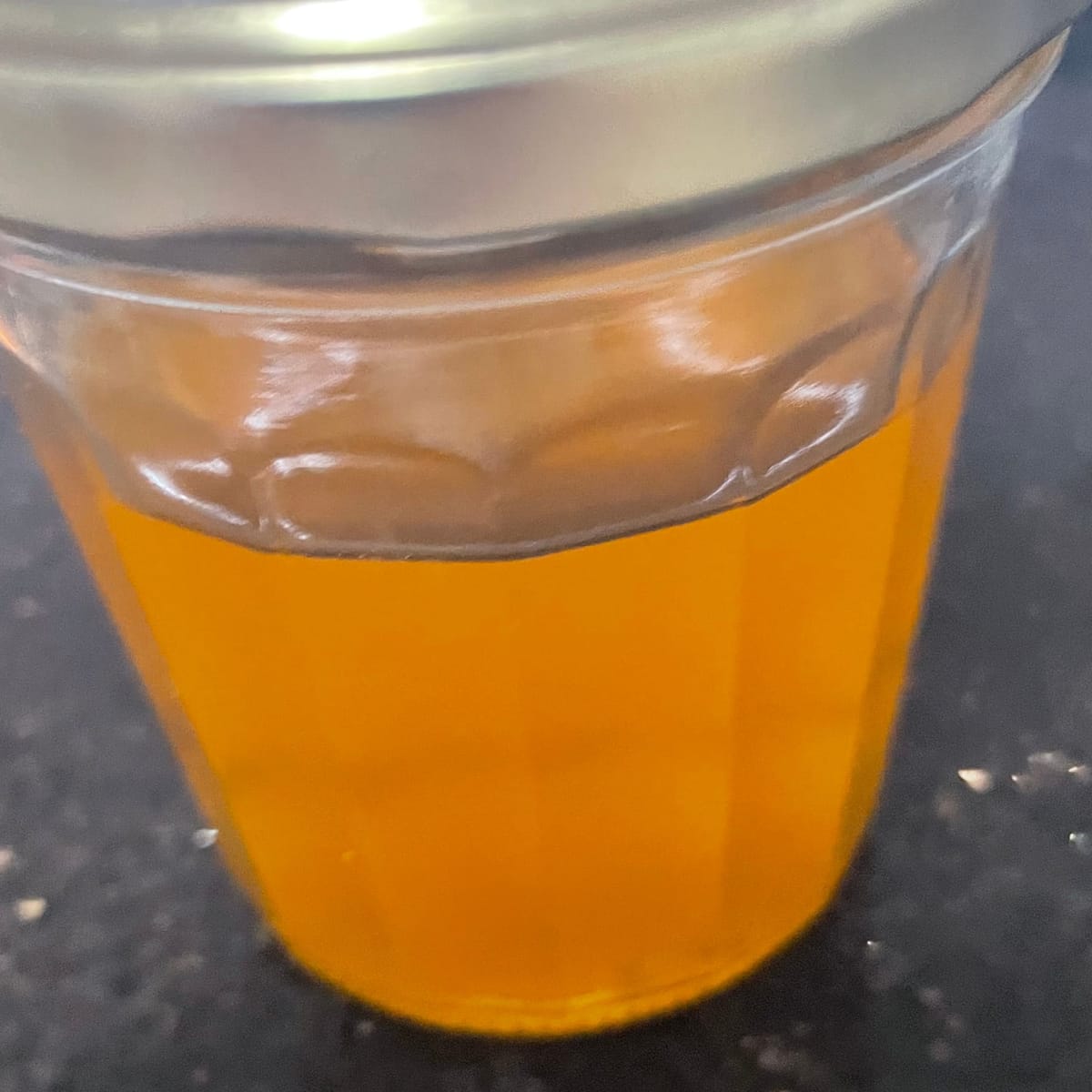
Ghee is such a beautiful food to cook with. The colour is stunning, and with its high smoke point (250 C/485 F), it is versatile and forgiving.
Ghee contains little to no lactose or casein as the milk solids are almost all removed.
So how do we make ghee?
Ingredients
- Butter - cultured or uncultured butter, salted or unsalted, raw or pasteurized.
Method
- Heat butter in a pan on medium high
- Skim off and discard any foam that rises and collects on the surface during the process. This foam is the butter's milk solids separating from the oil while the water evaporates.
- Continue to cook the liquid until all the water is boiled out. The ghee may make a cracking sound which will stop once all the water is cooked out.
- Once the liquid has turned a deep golden-yellow the ghee is ready - this will take approximately 20 minutes. There will be browned milk solids on the bottom of the pan.
- Remove from the stove and allow to cool for 4-5 mins.
- Strain the ghee into a clean jar by pouring through a fine mesh strainer or muslin cloth/cheesecloth. Leaving any brown milk solids at the bottom of the pan, or in the last drips of ghee.
- Seal the jar with a lid and store in a cool, dry place at room temperature or in the fridge. Try not to get water into the ghee when you use it or it may spoil/mold.
Enjoy
Photos of the Process:
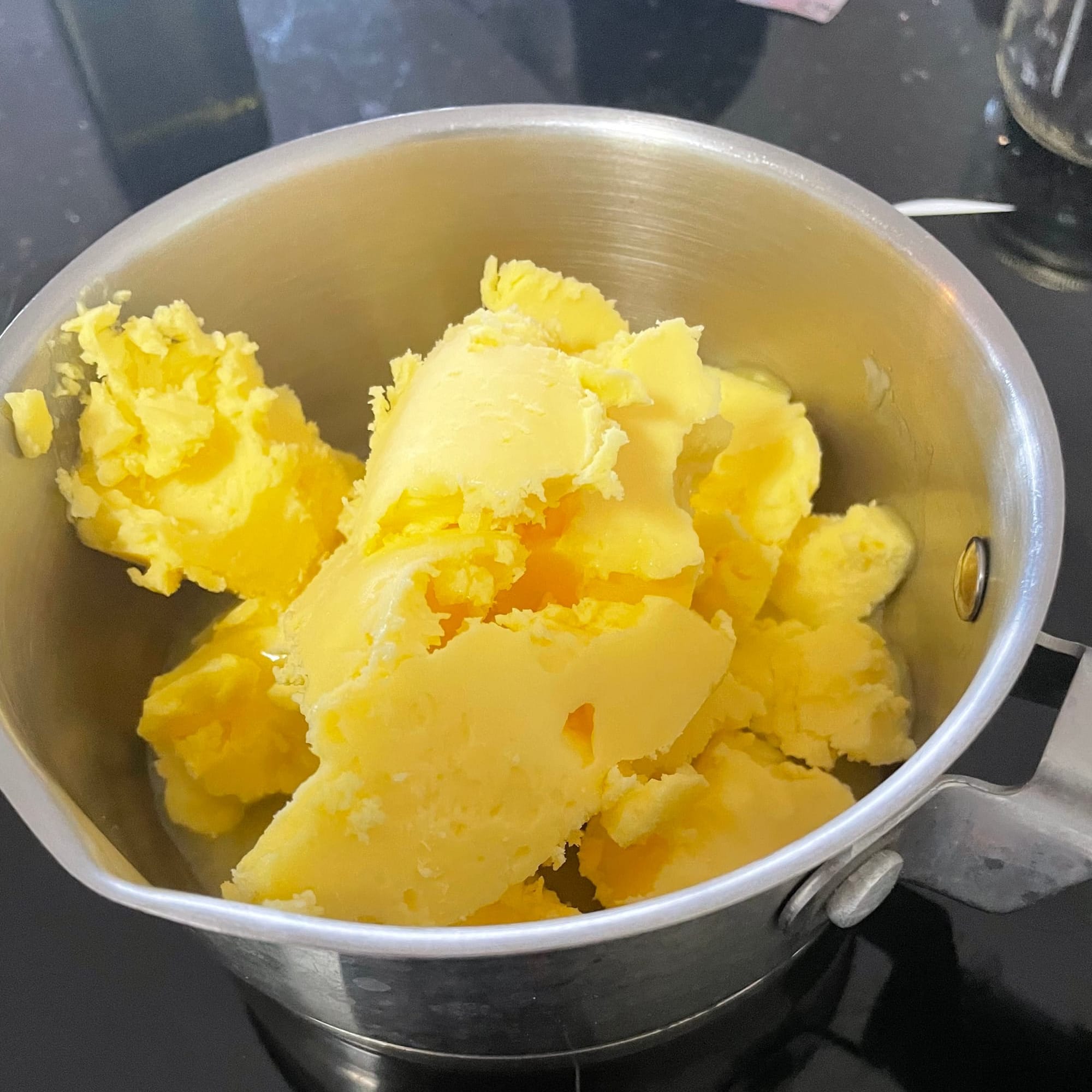
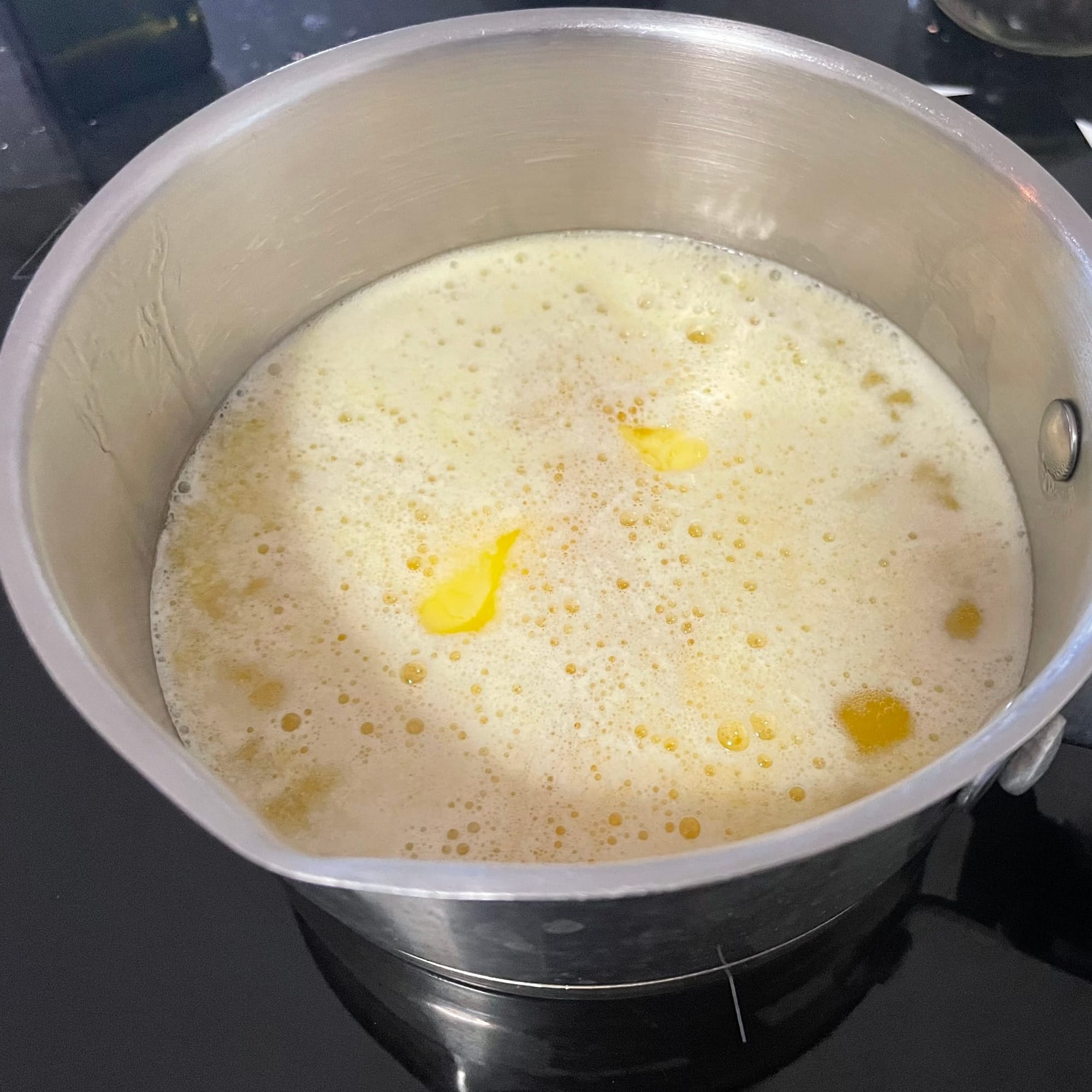
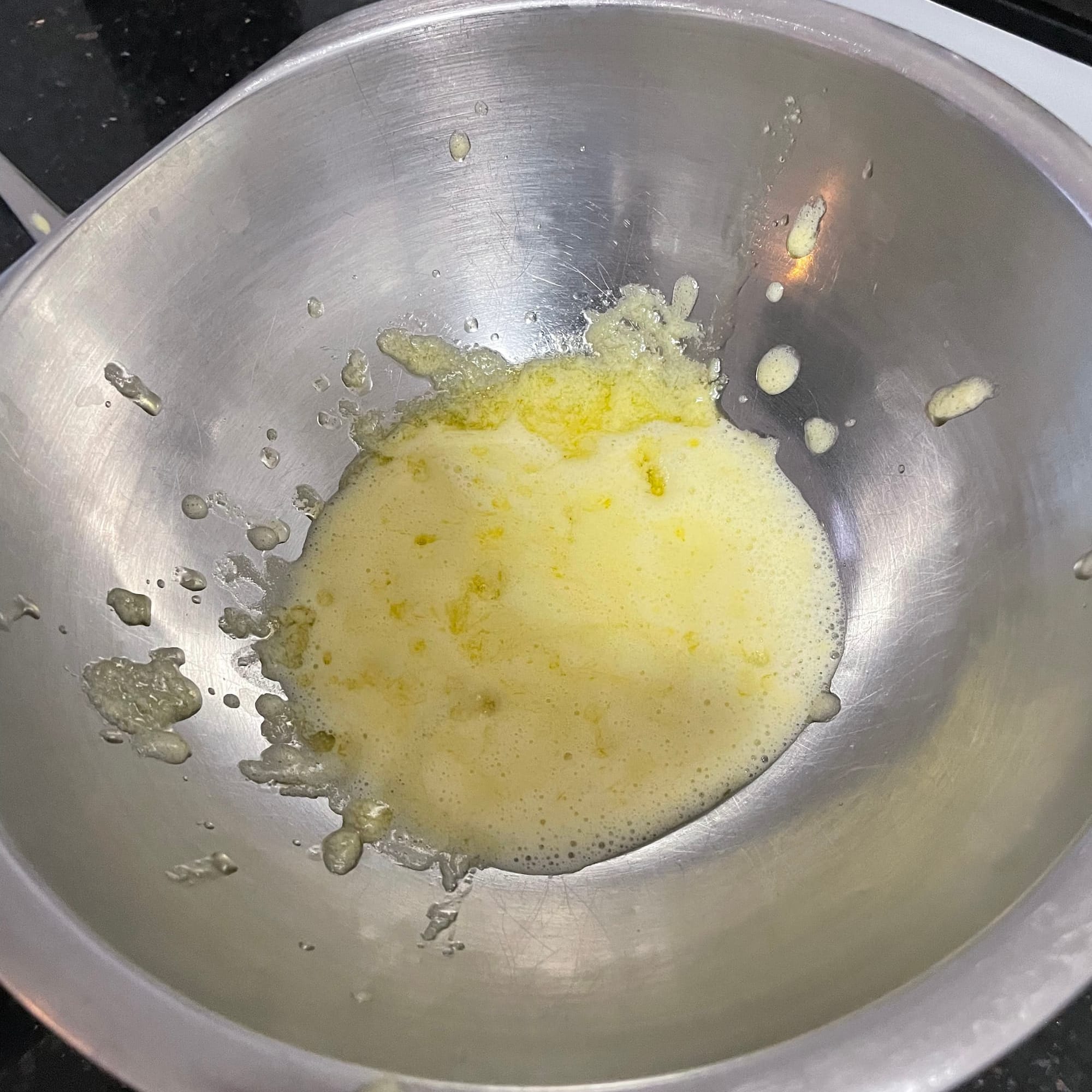
Melt the butter on low, and scoop off the foam.
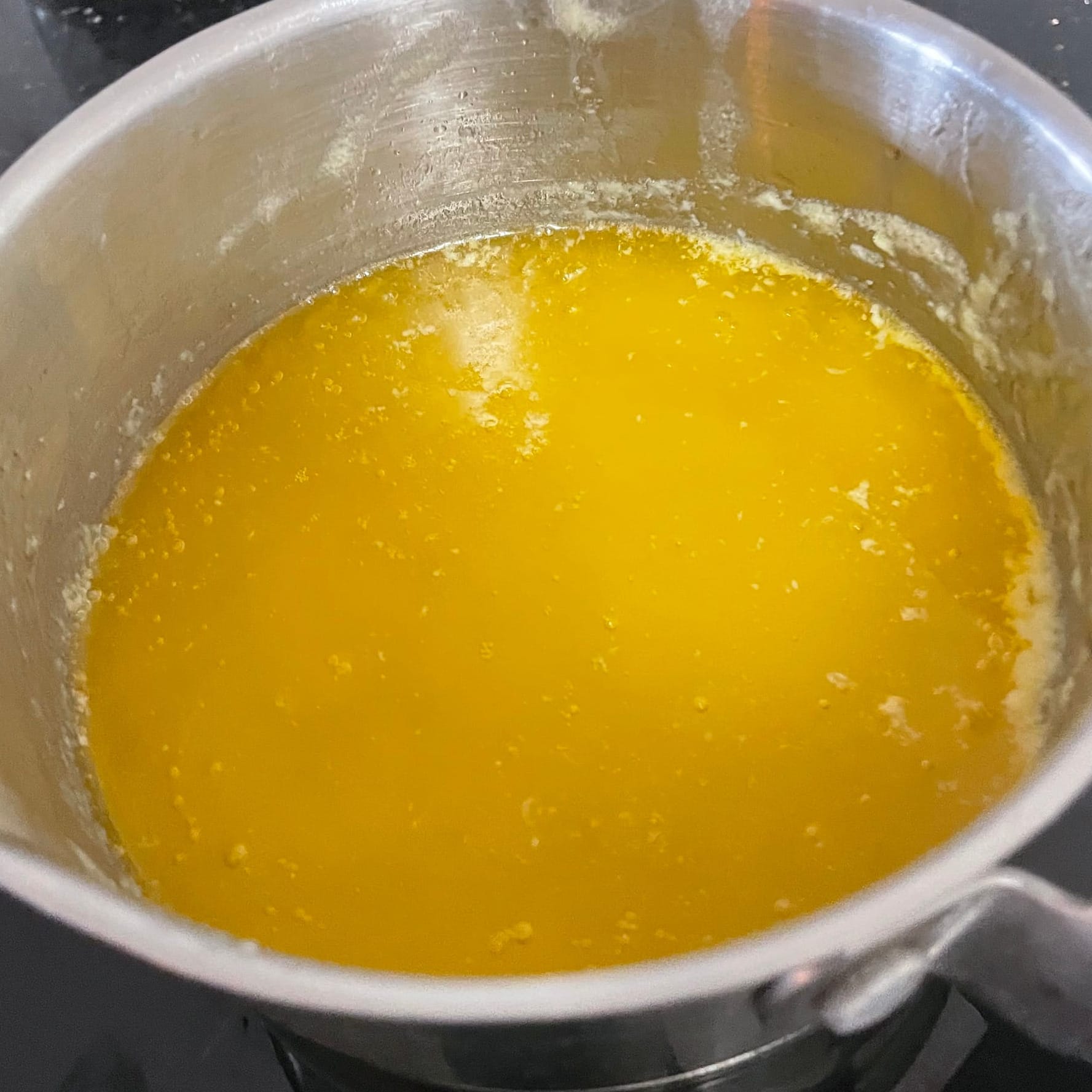
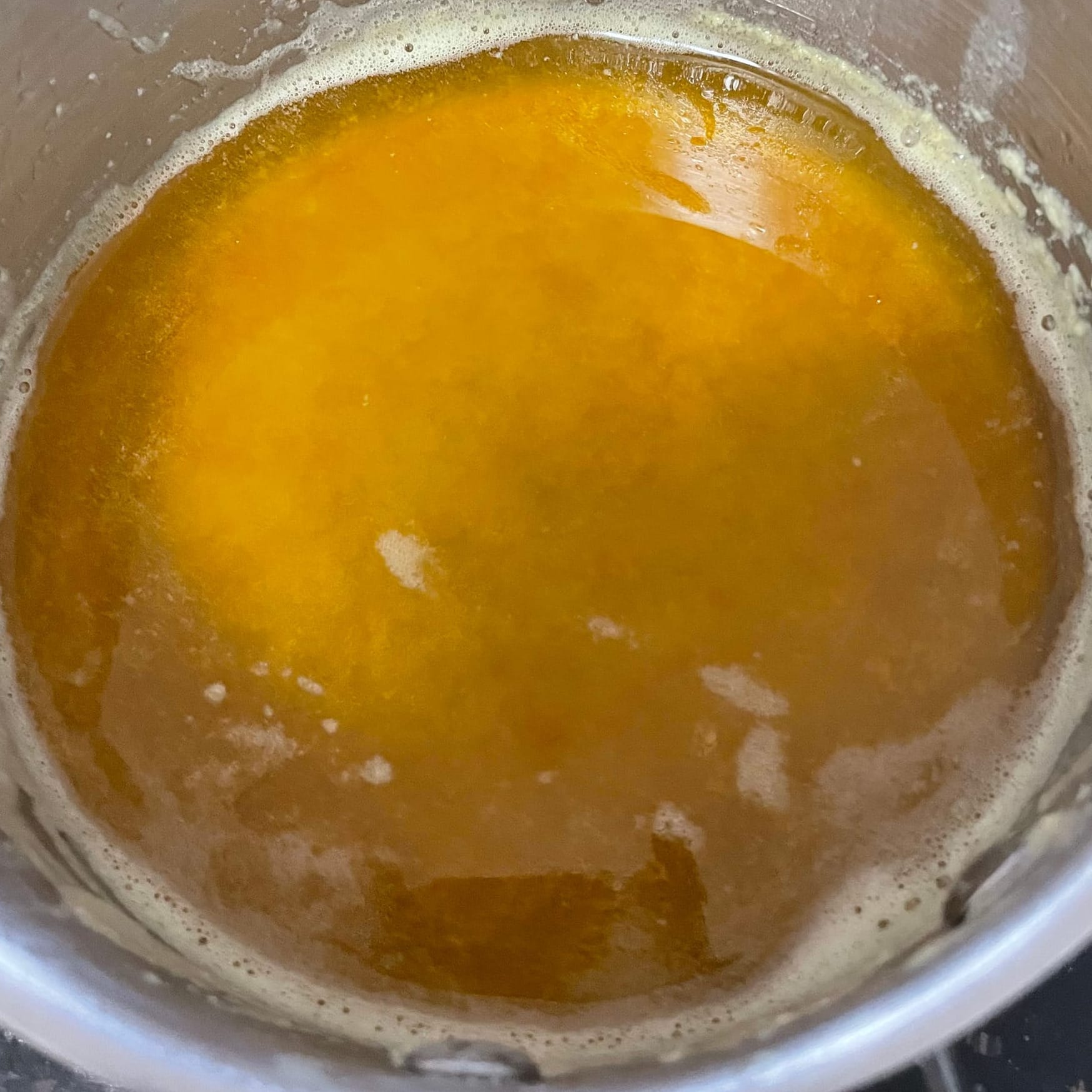
Keep cooking the butter until it turns a deep golden
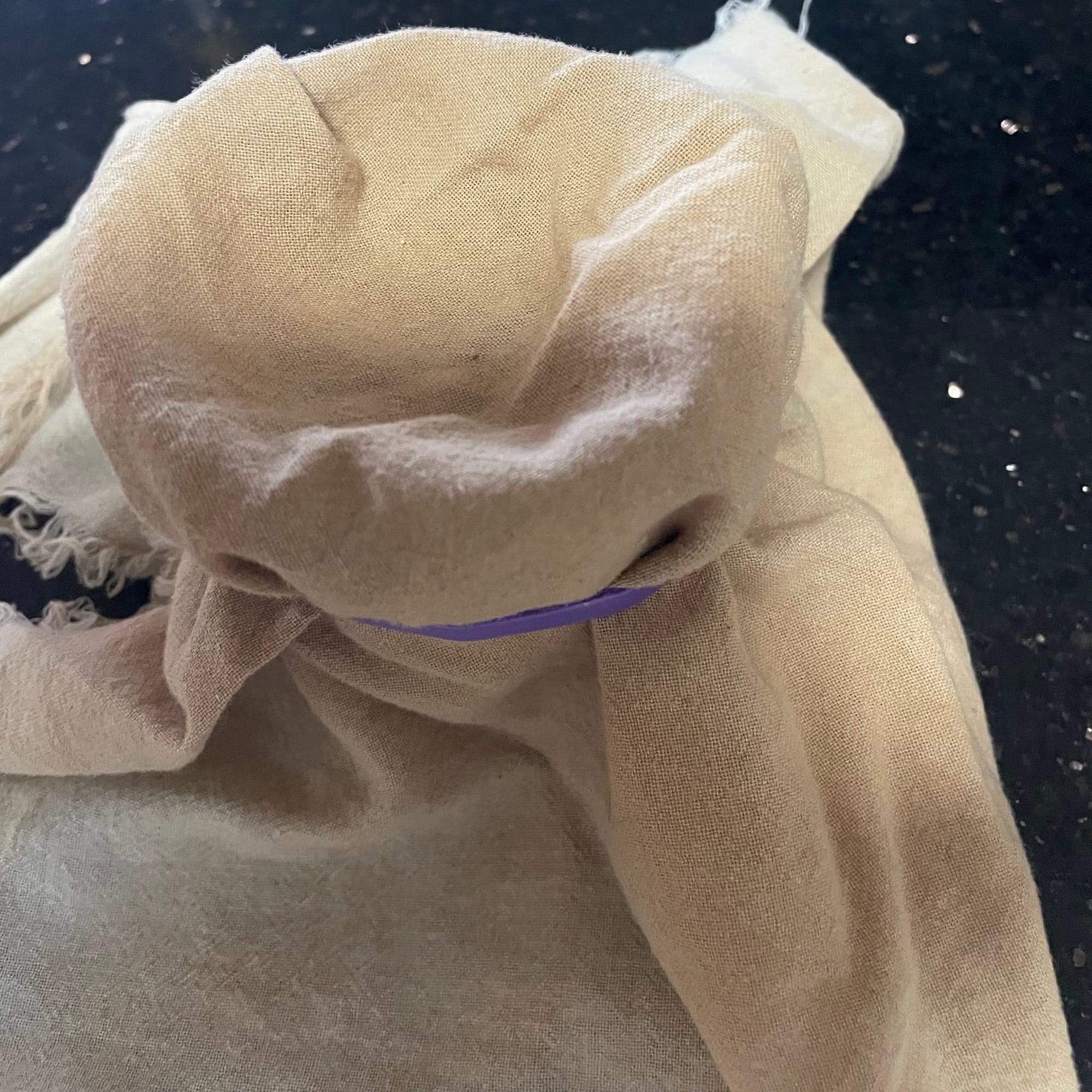
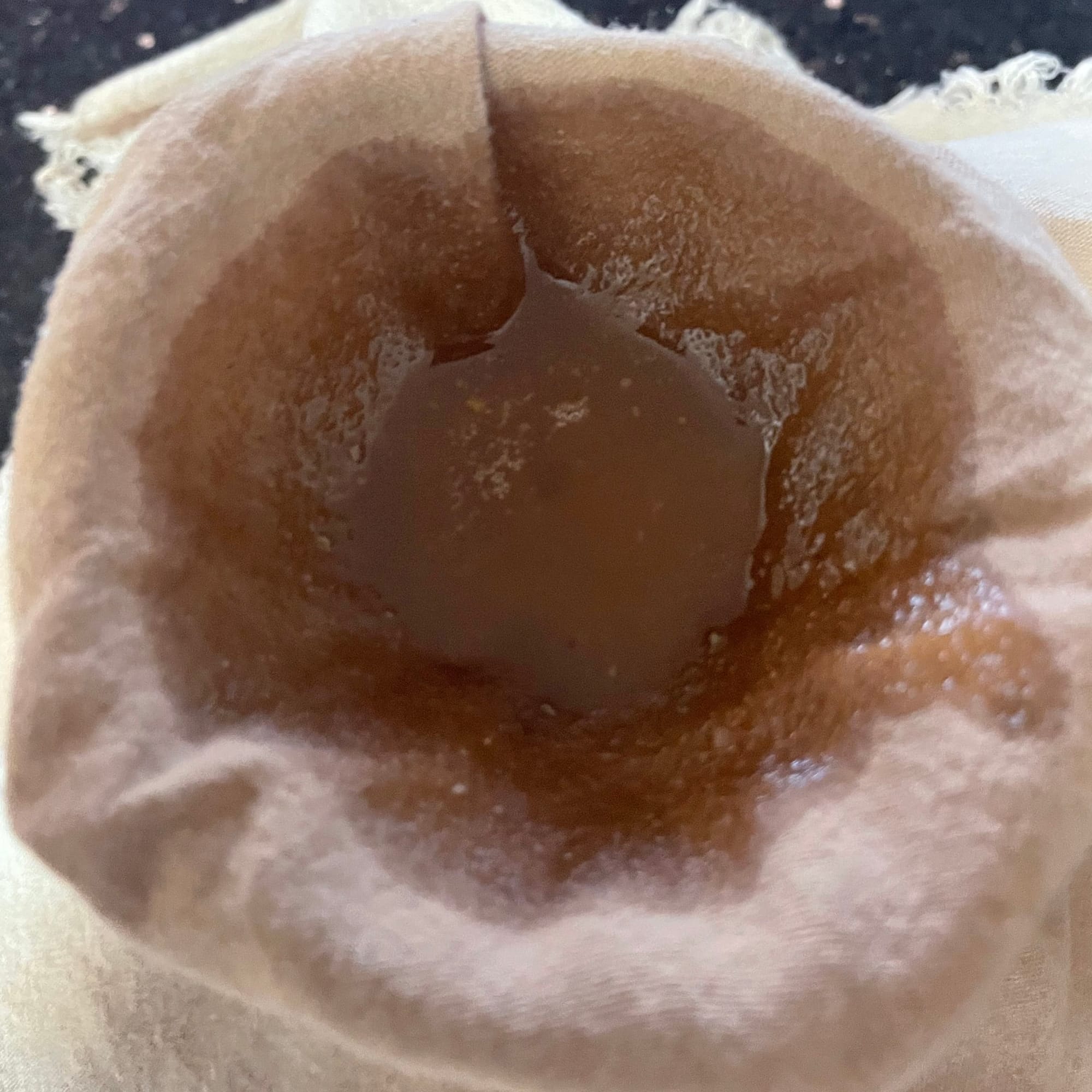
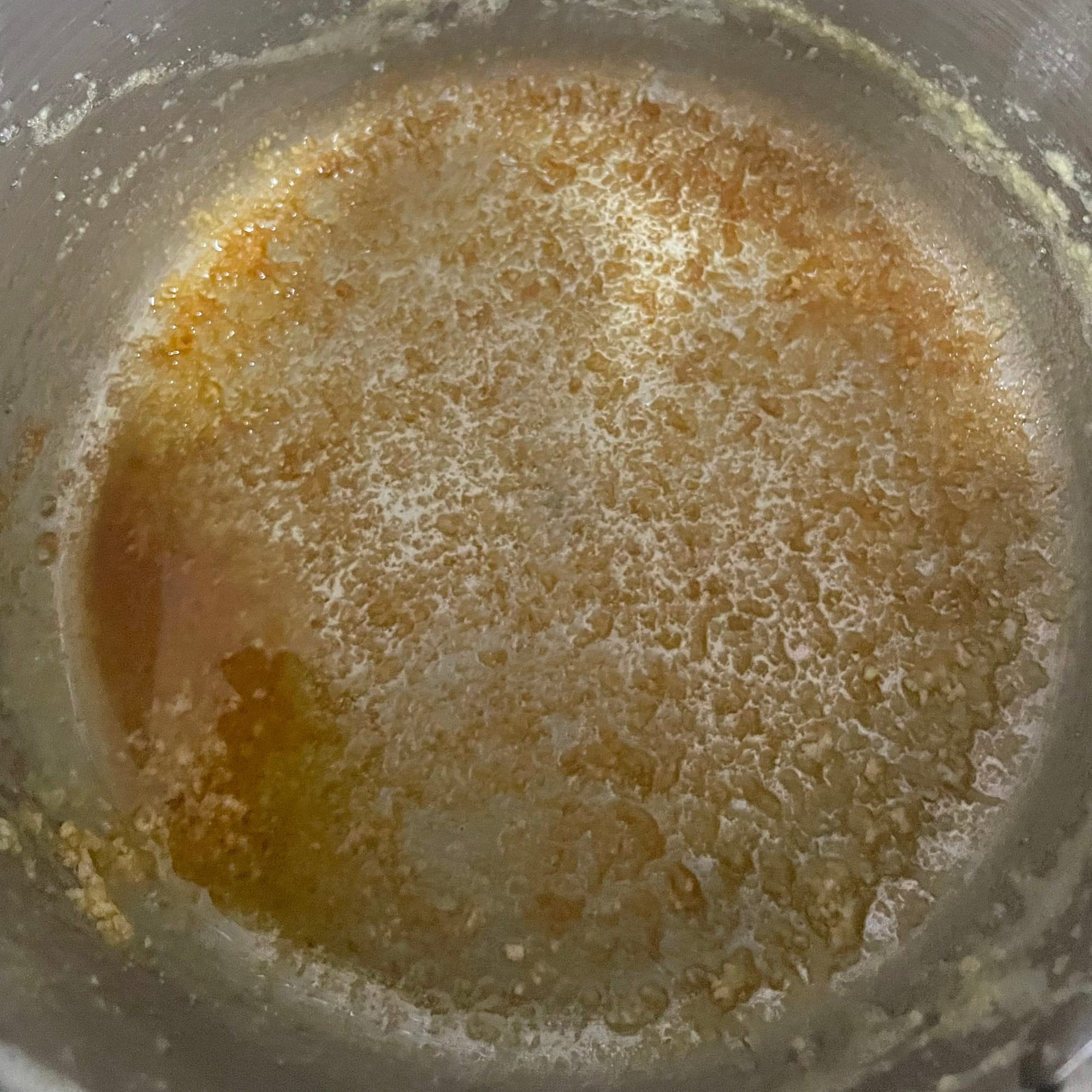
Strain the ghee through a muslin/cheese cloth. Brown solids will remain at the bottom of the pan (which are quite tasty mixed with some honey and eaten as a treat).
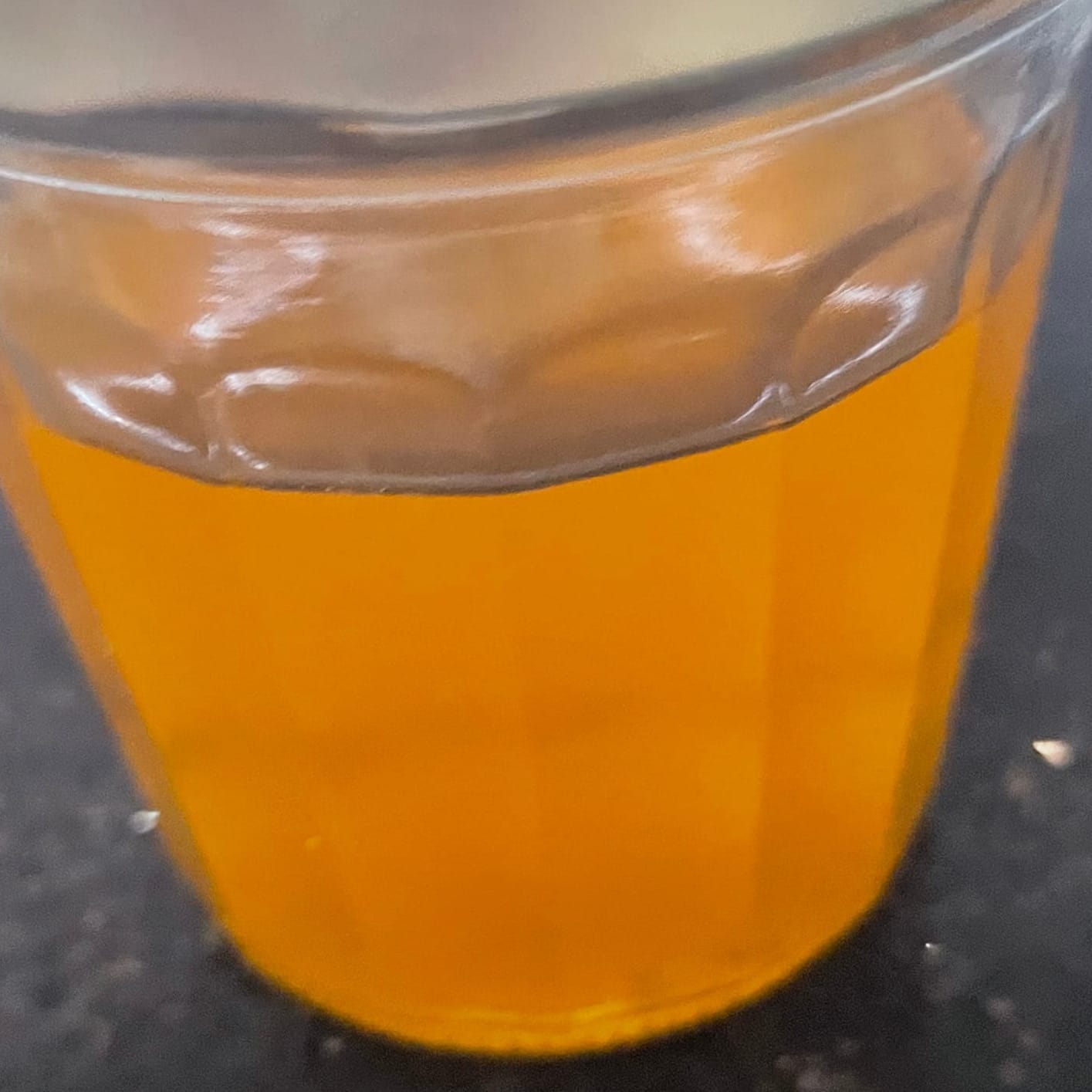
Note About Ghee
- Ghee has a long shelf life - it can keep for many months at room temperature because there is no water in it, and so bacteria doesn't grow on it. But keep steam or water away from ghee or it may spoil. If you aren't sure about the whole non-refrigeration part, it will store in the fridge too.
- It has a high smoke point 240C/465 F, and much higher than butter which has a smoke point of 177C/350F. This means you can cook it at a higher temp before it burns.
- The clarifying of the butter when making ghee remove almost all, if not all, casein and lactose.
- You can keep the milk solids and eat them (if you aren't lactose averse).
